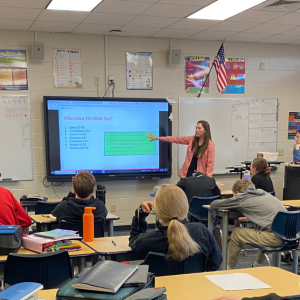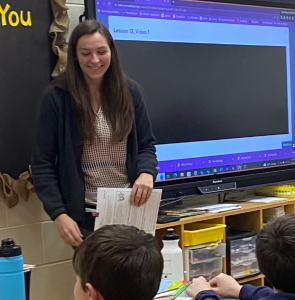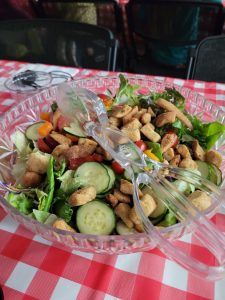Intervene with Individuals, Families, Groups, Organizations, and Communities
Through my interactions within the social work practice, I have come to understand that intervention is a very important part of my role. After pre assessments and engagement work has been done, intervention is necessary to be able to facilitate and create change within an individual, families, groups, organizations, and communities. I also understand the importance of utilizing evidence-based intervention methods and strategies in working with individuals, families, groups, organizations, and communities as it utilizes methods that have worked in the past as well as provides credibility for yourself and your program.
8.1 Implement clinical evidence-based interventions with individuals, families, and/or groups.
Course Evidence: As a way to demonstrate the skills that we had been learning throughout the semester, in my Advanced Clinical Practice: Individuals and Families class, I was able to record a 30-minute video of a pseudo-client therapy session. In this session, I used Cognitive Behavioral Therapy as the main framework when working with this pseudo-client. To view the full video, press play from the embedded video or click the following link.
https://www.youtube.com/watch?v=UbR6ci6iRxY
 Field Evidence: At my practicum locations, I have been able to observe, co-teach, and teach whole class lessons for 4th-8th grade. These lessons have followed the Second Step curriculum and the Creating a Culture of Kindness curriculum. Working to educate students on what different emotions are, coping skills, and ways to handle conflicts, these curriculums
Field Evidence: At my practicum locations, I have been able to observe, co-teach, and teach whole class lessons for 4th-8th grade. These lessons have followed the Second Step curriculum and the Creating a Culture of Kindness curriculum. Working to educate students on what different emotions are, coping skills, and ways to handle conflicts, these curriculums address tier 1 service intervention. Attached are pictures of me teaching some lessons at Collegedale Academy.
address tier 1 service intervention. Attached are pictures of me teaching some lessons at Collegedale Academy.
8.2: Integrate macro level evidence-based strategies with organizations and/or communities
Couse Evidence: In my Advanced Administrative Practice: Program Development class, I got the opportunity to work with 3 other classmates on developing a program proposal to address a need in the Chattanooga, TN area. Our group focused on the need for a program to help young adults learn skills of professionalism and job training to combat homelessness in Chattanooga TN. A section of the program proposal focused on researching macro level evidence-based strategies that have been beneficial when working with individuals experiencing homelessness. This information was compiled in the Literature Review and Evidence-Based Practices section of the paper. To view the full completed paper, click here.. To view the Literature Review and Evidence-Based Practices, scroll to page 8.
 Field Evidence: Towards the middle of my practicum experience, there was a crisis situation which impacted the schools and the teachers and students that attended there. The first week after this incident occurred, I noticed that faculty were not focused on meeting their basic needs such as food and water. To combat this, I worked with different churches and schools in the area to have lunch provided each day for the faculty. Organizations such as Southern Adventist
Field Evidence: Towards the middle of my practicum experience, there was a crisis situation which impacted the schools and the teachers and students that attended there. The first week after this incident occurred, I noticed that faculty were not focused on meeting their basic needs such as food and water. To combat this, I worked with different churches and schools in the area to have lunch provided each day for the faculty. Organizations such as Southern Adventist University, Collegedale Church, Standifer Gap SDA School, Lester Coon Adventist School and Church as well as others were generous and contributed food each day of the week. This allowed the faculty’s basic physiological needs to be met of food and water to continue to give them energy throughout the days. Additionally, I put together some care bags for each faculty member which included a note, a water bottle, a rose and a few other things to show the faculty they were valued. This was done anonymously.
University, Collegedale Church, Standifer Gap SDA School, Lester Coon Adventist School and Church as well as others were generous and contributed food each day of the week. This allowed the faculty’s basic physiological needs to be met of food and water to continue to give them energy throughout the days. Additionally, I put together some care bags for each faculty member which included a note, a water bottle, a rose and a few other things to show the faculty they were valued. This was done anonymously.
Skills Used: While completing the learning behaviors in this competency, I used skills of patience, collaboration, multitasking, intervention, active listening, and emotional intelligence.
Knowledge Used: Throughout this competency, knowledge was used from classes such as Advanced Clinical Practice: Individuals and Families and Advanced Administrative Practice: Program Development. Additionally, knowledge about the Chattanooga TN area, homelessness, schools and churches in the area, and classroom management skills were necessary to complete this competency.
Values Present: Competence was a large part of the values present in this competency through knowing interviewing skills and interventions when working one on one with individuals as well as being competent in the lessons taught to whole classroom lessons. Beyond competence, dignity and worth of a person was also highly present through providing food, making care bags, and utilizing tier 1 and 3 services, individuals felt valued, heard, and appreciated through this competency.
Cognitive Processes Used: Cognitive processes such as recognizing the need for food, water, and care bags among the faculty were used. Additionally, illustrating the concepts provided in the curriculum in an engaging way to students, inquiring about different aspects of the pseudo-client’s life, and assessing and proposing a program to decrease homelessness among youth in Chattanooga TN were also present through this competency.
Affective Processes Used: Several affective processes were present throughout this competency such as sensing that the faculty’s basic needs were not being met, enjoying teaching whole classroom lessons, seeking to decrease homelessness among youth in Chattanooga TN, and integrating cognitive behavioral therapy techniques when working one on one with individuals.
Theoretical Foundation: The Identifiable Victim Effect: This theory discusses how it is easier to empathize with one person or a small group of people rather than a whole group of anonymous individuals. This is a result of human nature. As we find a connection with someone, we tend to empathize with their situation and take steps to provide intervention methods. However, sometimes when doing macro work, we don’t always have an individual to connect with. Despite it being more difficult for me to then provide intervention, it is still important and vital that that group receives quality services.
